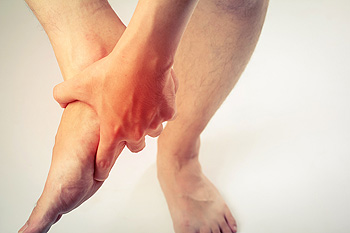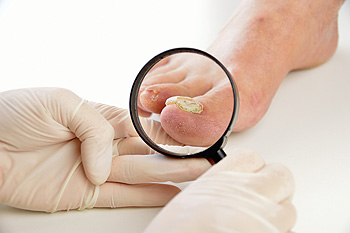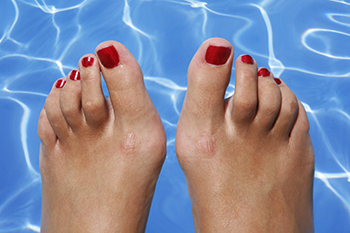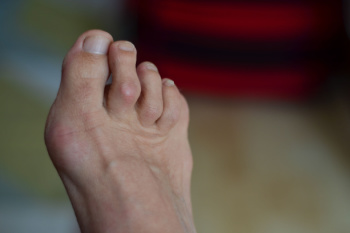
Plantar fasciitis is a common cause of heel pain, resulting from small tears and inflammation in the plantar fascia, a thick band of tissue running along the bottom of the foot. These tiny tears cause pain and stiffness, especially with the first steps in the morning or after prolonged rest. Common causes include overuse, tight calf muscles, flat feet, high arches, or wearing unsupportive shoes. Symptoms include sharp, stabbing pain at the heel, tenderness, and sometimes swelling. A podiatrist can diagnose plantar fasciitis through a physical exam and a review of symptoms. Imaging tests like X-rays may be used to rule out other conditions. Treatment typically includes stretching exercises, custom orthotics, wearing supportive footwear, or anti-inflammatory medications. In some cases, targeted exercises or injections may be recommended. If you have heel pain, it is suggested that you schedule an appointment with a podiatrist for an evaluation and appropriate treatment.
Plantar fasciitis can be very painful and inconvenient. If you are experiencing heel pain or symptoms of plantar fasciitis, contact one of our podiatrists from Comprehensive Foot & Ankle Center of South Jersey. Our doctors can provide the care you need to keep you pain-free and on your feet.
What Is Plantar Fasciitis?
Plantar fasciitis is the inflammation of the thick band of tissue that runs along the bottom of your foot, known as the plantar fascia, and causes mild to severe heel pain.
What Causes Plantar Fasciitis?
- Excessive running
- Non-supportive shoes
- Overpronation
- Repeated stretching and tearing of the plantar fascia
How Can It Be Treated?
- Conservative measures – anti-inflammatories, ice packs, stretching exercises, physical therapy, orthotic devices
- Shockwave therapy – sound waves are sent to the affected area to facilitate healing and are usually used for chronic cases of plantar fasciitis
- Surgery – usually only used as a last resort when all else fails. The plantar fascia can be surgically detached from the heel
While very treatable, plantar fasciitis is definitely not something that should be ignored. Especially in severe cases, speaking to your doctor right away is highly recommended to avoid complications and severe heel pain. Your podiatrist can work with you to provide the appropriate treatment options tailored to your condition.
If you have any questions please feel free to contact our offices located in Cherry Hill, Voorhees, Atco, and Turnersville, NJ . We offer the newest diagnostic and treatment technologies for all your foot and ankle needs.









